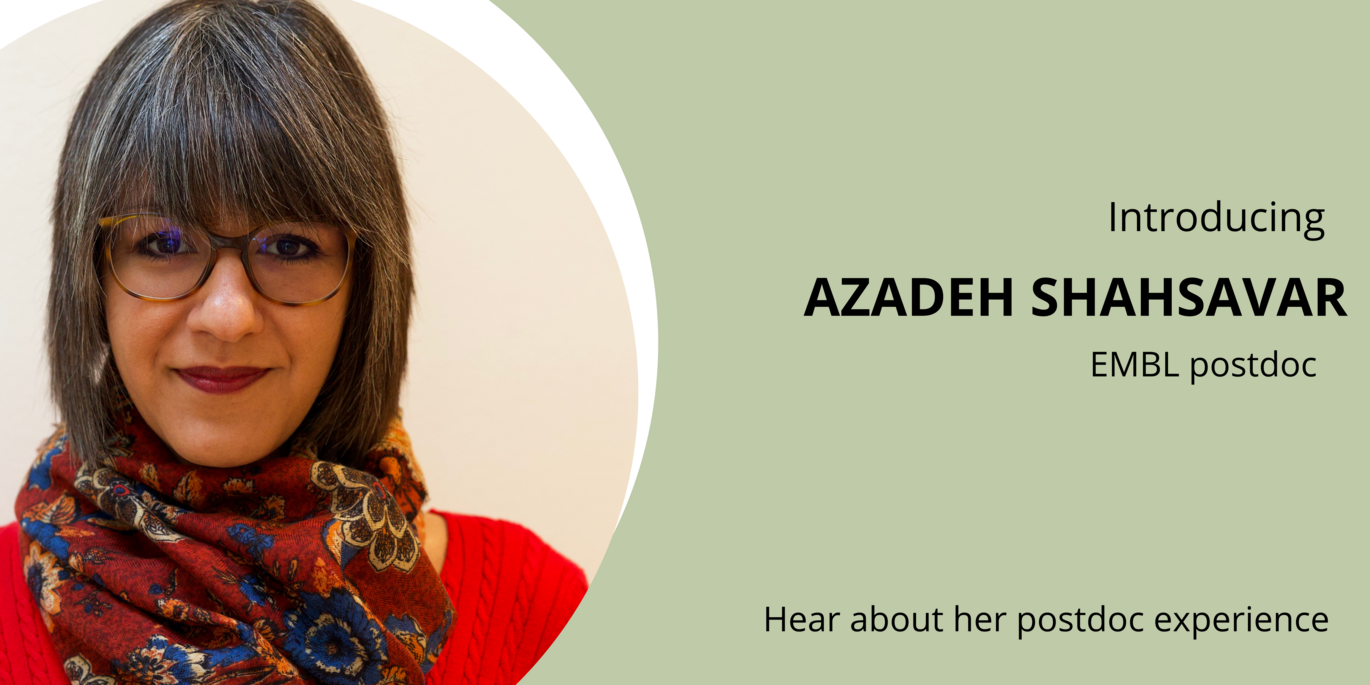Meet Azadeh Shahsavar: EMBL Postdoc
Meet Azadeh Shahsavar, one of EMBL's postdocs

Meet Azadeh Shahsavar
Assistant Professor at the University of Copenhagen, with a background in structural biology. Azadeh is currently working on protein target malfunction in the central nervous system in the brain, with an aim to eventually design medication to prevent malfunctions. Originally from Iran, Azadeh first came to Denmark as a PhD student and then stayed to do a postdoc in Poul Nissen lab. While there, she was offered an EIPOD fellowship at EMBL, thereby finishing her postdoc in collaboration between Nissen’s lab and EMBL.
How is doing your postdoc with EMBL different from doing a more local postdoc?
It was a very international center, people were from all over the world, and there are certain things that come with that international setting. We were all located far away from our families, so we all formed a really strong connection with each other. We all became lifelong friends. The people who are at EMBL are really passionate about science, everyone really puts their time and energy into it. There were days where I had to stay overnight as the data collection experiments take a log time. But even when I went to the beamline at 2 or 3 in the morning, there would always be a group discussing something. That was the fun part of it. People were actively, and very passionately working together to solve their problems. The whole thing was just very international and very alive.
What has been your best memory from doing the EIPOD Fellowship Programme?
Haha a memory? Well, once a month on Fridays we had a Friday-bar. One time the others were outside barbecuing, while I was working in the office. This was several years into the project, and I had just done a few tricks to try and better see the density of the drug-like molecule we were interested in. After a few tricks I could see the density, I was so happy and excited that I just ran to the Friday-bar and had a drink with the others. I was so excited: I was crying and having a drink and telling what I found at the same time. I remember it like it happened yesterday. After months of work, we could finally forget the stress of the project and just have some time together and chat about science and life.
Where their scientific advantages to being at EMBL?
The EIPOD fellowship gave me the opportunity to work at the EMBL facilities, which was great. I was an EIPOD postdoc at Thomas Schneider group at EMBL-Hamburg where I collected the serial data on micro-crystals on the P14 beamline operated by EMBL Hamburg at the PETRA III. Being located at the EMBL facility ensured that I could have discussions with the developer team behind the beamline, so we could push the project forward. The EIPOD programme also gives you travel resources, which was critical for our interdisciplinary project and allowed me to do certain experiments at Poul Nissen’s Lab in DANDRITE as well as at our industrial collaborator site, lab of Roger Dawson at Roche.
Where there any challenges?
The project in itself was challenging, but also exciting. With the people at EMBL you form such a strong connection. That even on the hardest days in the project I would have my network, my friends to console me and cheer me up during the challenging times. I don’t recall any challenges related to the EMBL setting, it is a very supportive environment, from administration to group leader, they will support you and your research in the best way they can.
Would you recommend doing a postdoc with EMBL to other students?
Certainly yes, without a doubt. It is one of my most fun memories during my whole postdoc. Even though the project was challenging, I can only remember it as a happy time. It really gives you the opportunity to be at the forefront of science. Getting involved in interdisciplinarity research is important. It’s not going to work if you’re only working within your comfort zone, you need to expand your comfort zone and get involved with other disciplines.
